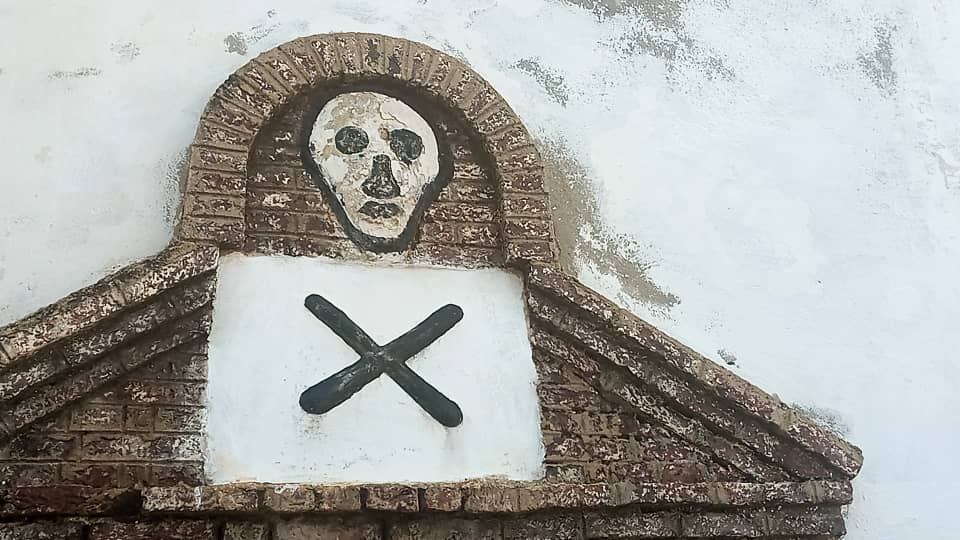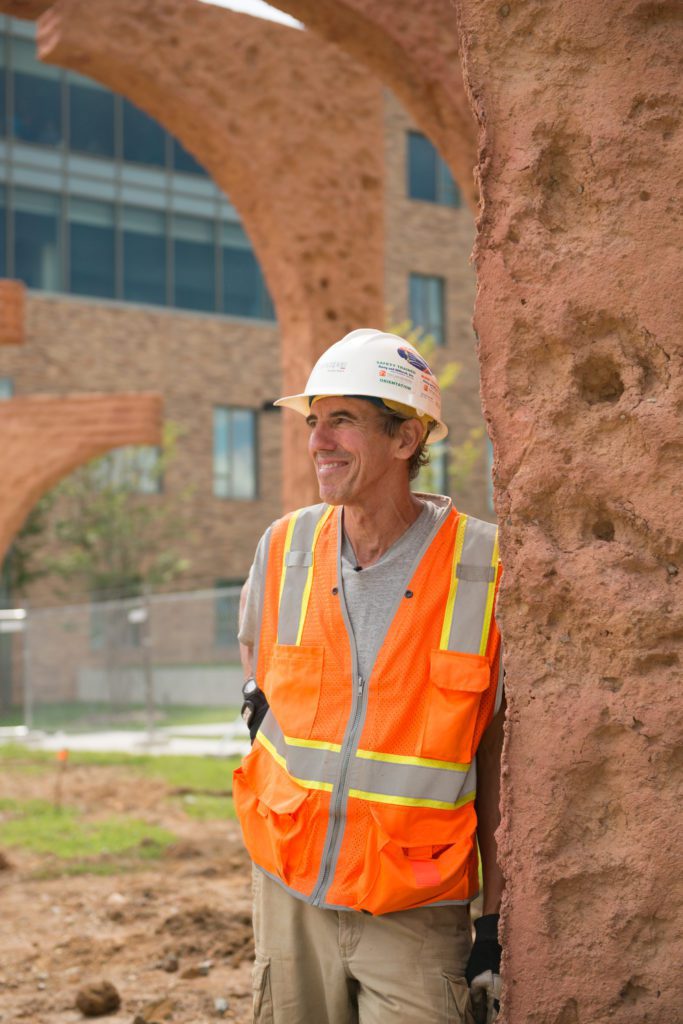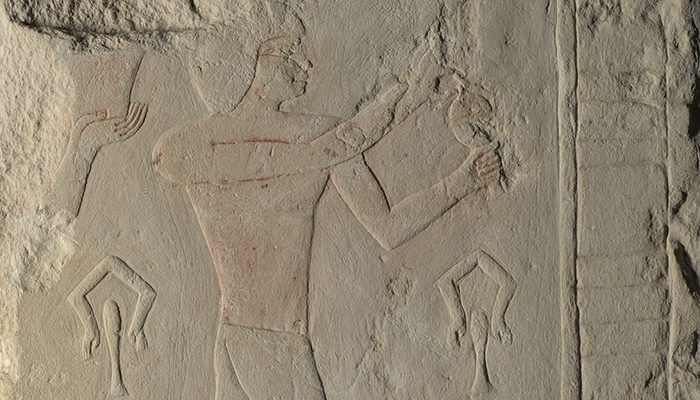As NCMA staffers work hard behind the scenes to reinstall hundreds of works of art spanning over 5,000 years, I asked two curators to share what excites them most about The People’s Collection, Reimagined, which opens to the public on October 8, 2022.
Lauren Applebaum, Jim and Betty Becher Curator of American Art
We are excited to display works from across the collection together to create new and unexpected dialogues. For example, a landscape painting created in 1859 by the American artist Louis Rémy Mignot entitled Landscape in Ecuador will be in conversation with an ancient Guatemalan incense burner.
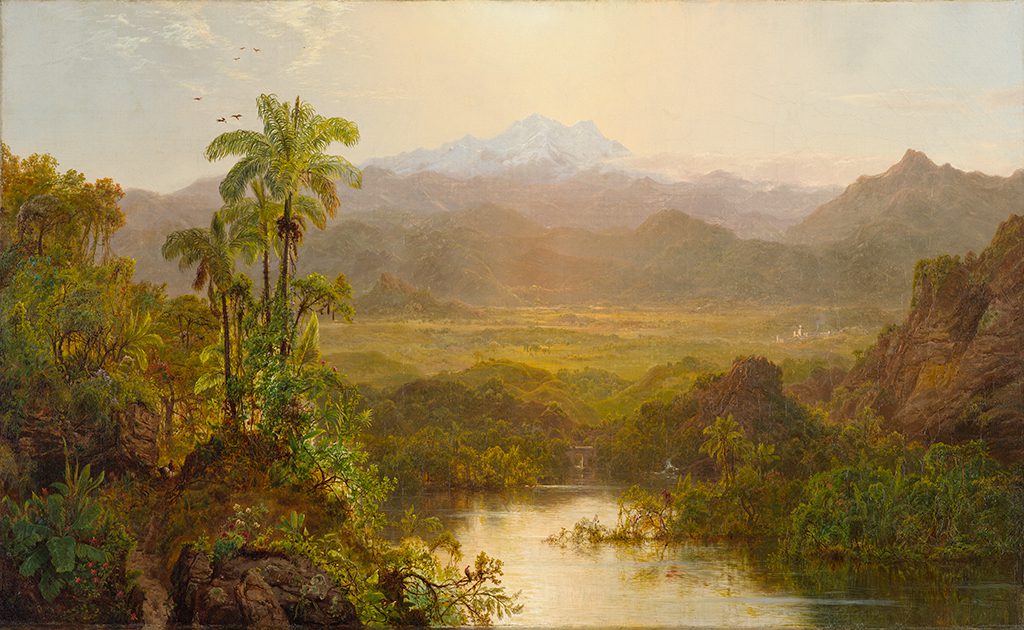
Alongside fellow artist Frederic Church, Mignot went on an arduous trip to Ecuador in the summer of 1857. While there he sketched the tropical scenery to create grand vistas of faraway places for the American public. In this work the artist invites the viewer on a journey both adventurous and spiritual. Through tangled vegetation, across a viaduct and rolling foothills, our gaze is led upward to a snowcapped volcano. In the right middle ground, a cluster of buildings signals a small town dwarfed by the rugged natural world. Beneath the glow of the rising sun, this landscape suggests a place and time before the encroachment of industrial society. In actuality this town in the region of Riobamba was a bustling metropolis by the mid-1850s, situated adjacent to the volcano El Altar.
Ángel González López, Research Curator of Ancient American Art
While Mignot’s painting is an American tourist’s fantasy of this tropical region, with a volcano at its center, the incense burner prompts us to consider Indigenous perspectives and traditions related to volcanic activity in Mesoamerica. For thousands of years, Indigenous people created artworks that display humans’ interpretation of the afterlife. This solar spiritual domain has been envisioned as emphasizing sensory pleasure—a landscape filled with flowers, dance, songs, birds, and butterflies.
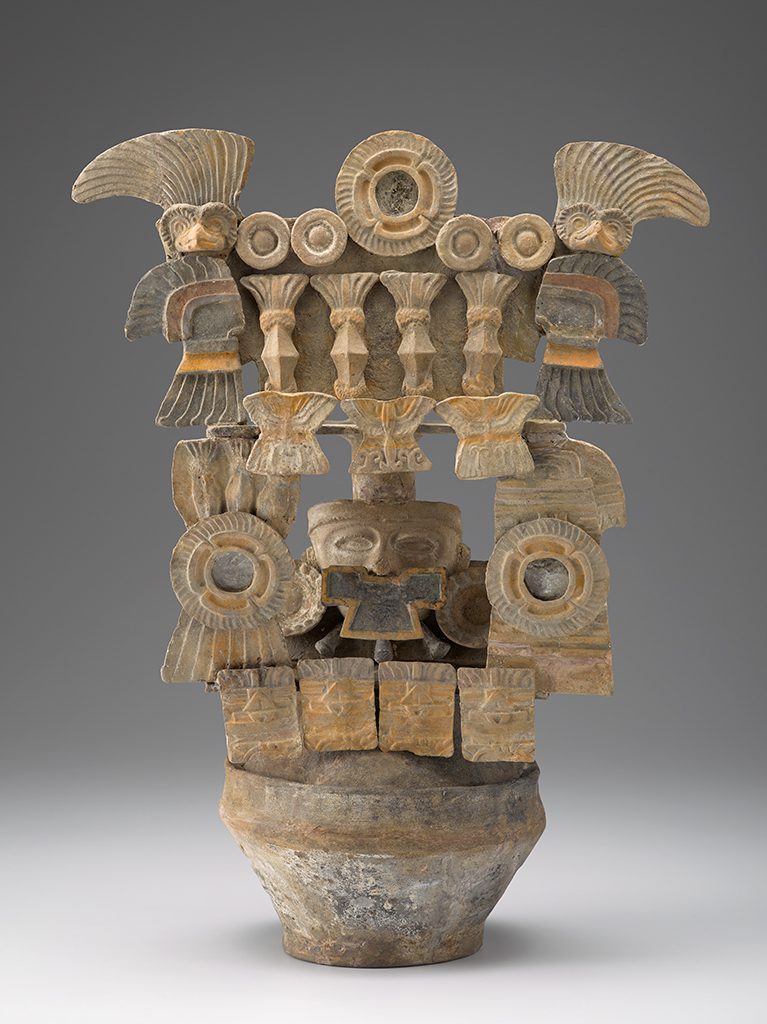
The incense burner embodies a mountain of fire and the place of celestial ascension through cremation. It employs a metaphor drawn from nature to associate the transformation of the deceased person to the metamorphosis of a butterfly. The clouds of smoke that would have poured out of the object when in use reenact the funerary pyre and the apotheosis (elevation to the divine realm) of the deceased. In viewing pairings like this, visitors can gain new understandings about cultural practices represented in the People’s Collection.

Naming the Nameless
Ghanaian artist Paa Joe memorializes the lives of Africans who passed through “The Gates of No Return” during the transatlantic slave trade. Two NCMA staffers respond to this moving work of art.
Meet Thomas Sayre
The NCMA’s new identity and logo were inspired by an iconic sculpture in the Museum Park. Get inside the mind of the Raleigh artist who created Gyre.
The Africa We Ought to Know
In the past the fusing of diverse beliefs and practices was widespread and remains a constant feature of African culture today.

